Rewind a few years and traditional advertising was beginning to look a bit… well, traditional. With smartphones putting powerful multimedia screens in everyone’s pockets, social media monetising their operations by injecting ads into people’s personal newsfeeds, and vloggers becoming the darlings of the endorsement world, it was tempting to imagine that the relatively old-fashioned world of TV, press, cinema, radio and outdoor advertising was being superseded by these dynamic digital delights. But if traditional advertising channels are dead, someone forgot to tell food and drink.
Fmcg brands spent £1.5bn, up 3.2%, on traditional advertising in 2015. And the top 100 brands, led by Coca-Cola, have collectively pushed harder with budgets rising by 14.7% to hit £641m.
“Anyone planning a media budget will still get as much TV and press as they can, then they look towards digital”
James Stafford, StyleHaul
As for the supermarkets, despite the poor old big four scaling back their advertising budgets this year as the price war bites down hard, as a group the supermarkets have more than doubled the amount they spent on traditional advertising over the last decade, from £226m to £481m.
So what’s the reason for the enduring appeal of traditional media in an increasingly digital world? Which brands and retailers are investing in it? Is digital all it’s cracked up to be? How are old and new methods of advertising working together to sell more stuff? And what new techniques have emerged on the scene?
“Anyone planning a media budget will still get as much TV and press as they can, then they look towards digital,” says James Stafford, senior VP for Europe at social video specialists StyleHaul. “Most people would agree that digital complements TV, and although they are different things they work better together. It would be a very brave brand owner to abandon traditional media entirely. The numbers are still incredibly strong and growing a few points is actually a really good outcome. You can reach 10 million people with one placement on TV. It works.”
So does print, says Parry Jones, MD of print media at The Specialist Works. “Digital and mobile channels bring loads of really new and exciting ways of targeting people, and some of them are scarily good. And in the media we have a natural tendency to be early adopters and interested in new technology. But the effectiveness of physical media adds a level other channels can’t.”
Any suggestion newspaper display ads are an “old mechanic” is nothing less than “printism” says Mark Field, invention director at Trinity Mirror Solutions.
“Newspapers still reach millions of people every day. They may not be in vogue but they are still very relevant to mass market Britain. So they are still an absolutely brilliant way for supermarkets to get their message out there and drive footfall. We hit over 41 million people a month and all of them are important customers for retailers.”
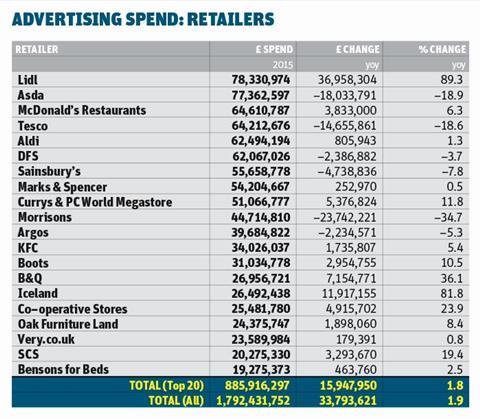
The volume of display ads purchased by supermarkets in the newspapers every single morning proves his point. And they are getting bigger. Wraparounds are an increasingly common sight. And last week Lidl paid for an enormous triple-page gatefold display ad in the Daily Telegraph to show off its Easter deals. It’s just one example of why it’s the new number one in the biggest spending retailers table as it continues to flood cash into traditional advertising to help steal sales from the big four.
But it’s not just display ads where fmcg is splashing out on printed promotions. Jones says e-commerce businesses like Amazon, BooHoo and ASOS are reaping the rewards of “transactional media” (where a shopper receives a promotional coupon inside a parcel from an e-commerce player like Amazon).
“TV has become precisely measurable, because we track it through to a sale”
Parry Jones, The Specialist Works
“Graze and Hello Fresh send out loads of them offering introductory deals or similar. It’s a massive growth area. E-commerce businesses and multichannel retailers are becoming media owners by taking transactional media into their home distributions. Ocado has built its business on it. They do millions of inserts.”
It’s ironic that some of the biggest tech-heavy companies in the world are enjoying success with old-fashioned (if well targeted) leafleting, although Jones says the simple fact is it’s effective for brands on an advertising level and generates an additional and lucrative revenue stream for the e-commerce businesses.
“They have nailed all their online stuff, and have found their scalable channels are transactional inserts and TV, which is also having a massive resurgence among online businesses. Let’s say your TV ad runs at 8pm. We put a pixel on your website that measures traffic before and after 8pm, so you can clearly see the spikes when people visit your website following the TV ad. So now TV has become precisely measurable, because we track it through to a sale. It’s the same thing with inserts. An e-commerce business like Graze requires a code on an insert to be entered online, so they can measure the effectiveness of a printed insert so easily now.”
Most complained about fmcg ads
Source: Advertising Standards Authority
- Protein World - 380 complaints
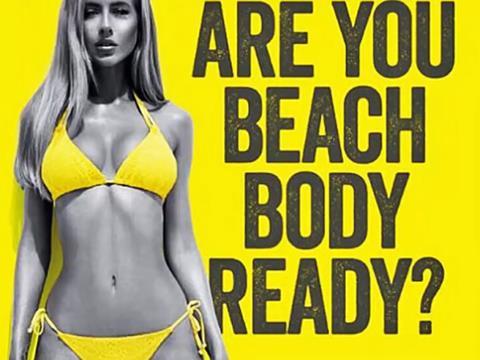
ASA verdict: Not guilty!
Confusingly, even before it began investigating Protein World’s ‘Are You Beach Body Ready’ campaign, the ASA told Protein World not to run the ad again in its current form due to concerns about the ad’s health and weight loss claims. Yet after investigating whether the ad broke the rules on harm, offence and social responsibility, it said the ad wasn’t irresponsible.
- Department of Health - 181 complaints

ASA verdict: Not guilty!
As part of an anti-smoking campaign by PHE, this visceral ad showed a man smoking a cigarette that also contained blood and flesh. The ASA says complainants branded the ad “gruesome, offensive and irresponsible”. The ASA conceded the ads might be “unsettling” but also contained an “important health message” and cleared them.
- Nicocigs - 145 complaints

ASA verdict: Not guilty!
This ad attracted complaints just by advertising e-cigarettes to begin with, which many believe shouldn’t be allowed. But it also attracted criticism for appealing to children. However, the ASA decided the ad wasn’t scheduled around ‘programming that was likely to appeal to children’ and that its ‘style was not appealing to them’.
The digital economy
The combination means the “rise of digital tech is allowing offline media to be far more trackable than ever before because now they are working in tandem,” adds Jones. And this blend of old and new is essential in 2016, says Dan Hagen, chief strategy officer at global media agency Carat.
“We are seeing a 20th century economy turn into a digital economy and it’s a huge driver of change for all businesses. The biggest companies in the world aren’t growing. They are losing share to digital, e-commerce and m-commerce business models that are better equipped to deal with the digital economy. And that has implications for all businesses and channels in marketing.”
So even though traditional advertising is doing quite nicely, the context is all: digital advertising is soaring. It’s obviously from a lower base, but according to the latest Internet Advertising Bureau UK Digital Adspend report, conducted by PwC, advertisers across all industries spent a record £3.98bn on digital advertising in the first half of 2015, up 13.4% year on year.
“There is a symbiotic relationship between the growth of digital and the strength of TV”
Dan Hagen, Carat
At the same time, advertising on social media grew 51% to £574m, while native advertising grew 50% to £325m. Tablet-dedicated ad spend grew 115% to £68m. And the combination of retail and consumer goods spent 30.1% of it, way ahead of the second biggest spender, travel and transport, which spent 16.8%.
“I don’t know if it will continue to grow at the same rate,” says Jeremy Radcliff, digital marketing, ecommerce and insight specialist at Clavis Insight. “Like anything it will plateau. But I don’t think anyone would predict when that point will come.”
But the stellar rise doesn’t “necessarily mean bad news” for TV, adds Hagen. “There is a symbiotic relationship between the growth of digital and the strength of TV. If you’re a TV station you shouldn’t be terrified but you need to a have a strategy to embrace digital. If you’re going to be successful in this digital economy you need to think digital first. It’s a challenge a lot of people are facing and everyone is struggling with. It’s tough, but it’s necessary in order to stay relevant in the next five years.”
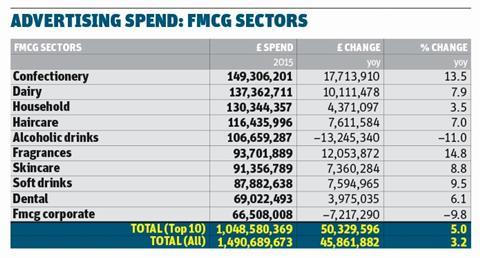
Yet often when it comes to digital budgets it’s still a case of ‘what’s left in the pot’ says Daren Bach, founder and MD of communications agency, Provoke. “There aren’t too many integrated agencies. So it’s not necessarily joined up, asking how one channel can support the other. But that’s how it should be.”
So, in 2016, when everyone understands the power of utilising digital channels alongside traditional ones, why isn’t it happening more?
“I don’t know, but it amazes me. I think there are learnings to be made on both sides. Clients might want to stick with what they know and there are agencies that still focus on the bread and butter. Or they don’t have the internal skill set to offer digital. New account directors understand it more, so they are testing it, and proving it. The brave ones are doing it. Coca-Cola is very strong.”
“Digital and traditional advertising should not work in silo, they need to complement each other”
Bobby Brittain, Coca-Cola GB
Coca-Cola is the biggest fmcg brand in the country (according to The Grocer’s Britain’s 100 Biggest Brands) and it’s also the UK’s biggest spender on traditional media. And it’s spend, like a lot of brands, is up. But key to its strategy is a holistic approach to advertising channels in 2016.
“A campaign should be driven by a core creative idea,” says Bobby Brittain, marketing director for Coca-Cola GB. “It’s that simple. Digital and traditional advertising should not work in silo, they need to complement each other. It’s hard to even categorise them separately now as they are crossing over more than ever before. Any company with a separate traditional and digital advertising team is not going to last long. Integration is the key to a strong media plan.”
Danepak is another “great example of one brand using above the line differently but in harmony with online,” says Paul Houlding, managing partner at creative agency Isobel. “You have to use different media appropriately but base everything you do from one overarching brand idea. The Danepak television advertising is classic full on branded work. The online content entertains and has a light branding touch. For bacon lovers the content is hugely relevant and highly entertaining but much lighter in terms of sell and overt Danepak branding. And the millions of interactions suggest we have the balance right.”
“Brands can be clever about how they combine the prevalent use of mobile devices, the location-based facility they offer, and how they understand the needs of the consumer”
Jeremy Radcliff, Clavis Insight
Still, the fmcg industry at large “hasn’t embraced the full potential of digital” in terms of “experimentation and investment” in the way other sectors have, says Stafford. Although he thinks it’s starting to catch up.
“There is a received wisdom that digital is for a younger audience and those people tend not to be grocery shoppers. So if you break down the sectors that have embraced digital the most they tend to be brands that target younger audiences. But in the last couple of months we’ve been talking about how digital has come of age because no-one thinks the internet is just for kids anymore.”
On a sliding scale, fmcg goes from “really enthused to really excited” in terms of the “potential and possibilities that digital offers” says Radcliff. “Mobile represents the exciting end of that spectrum for a lot of clients because of the location-based potential. Hayfever brands do this particularly well. They are investing in pollen apps for hayfever sufferers. You check the pollen forecast, it’s high so you know you need medication, and takes you directly to the nearest retailer to buy their anti-histamines. Brands can be clever about how they combine the prevalent use of mobile devices, the location-based facility they offer, and how they understand the needs of the consumer.”
Most shared digital fmcg campaigns
Alistair Griffiths, from online video experts Unruly, explains why people shared them
- Purina ‘Puppyhood’ 3,021,499 shares
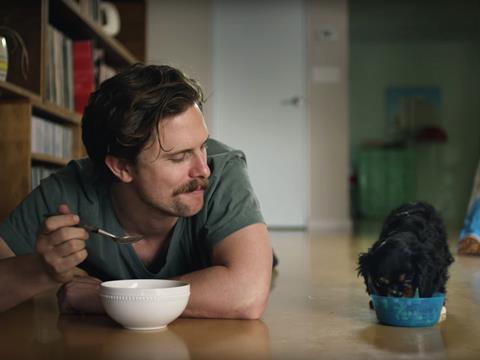
Purina bounded its way into the hearts of the internet last year with this adorable ad about one man and his very, very cute dog. Created by Buzzfeed, the video, which focused on the friendship between a guy and his newly adopted puppy, was the third most shared ad of 2015 overall. More than half reported intense feelings of warmth and happiness after watching.
- Budweiser ‘Lost Dog’ 2,808,541 shares
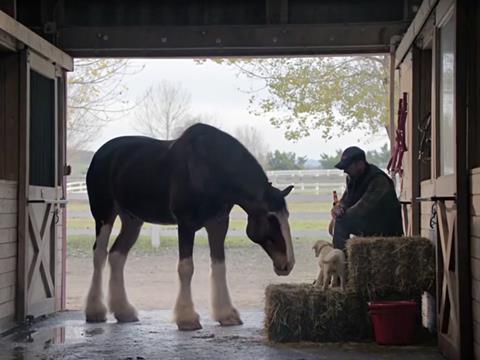
Budweiser took the Super Bowl crown for the third year in a row in 2015 with this heartstring-pulling video produced by Anomaly. It follows the story of a very cute Labrador puppy, which gets lost after jumping into the back of a van. It finally finds its way home, after an exhausting journey (for viewers too) and with a little help from the beer brand’s iconic Clydesdales.
- Kleenex ‘Unlikely Best Friends’ 2,027,213 shares
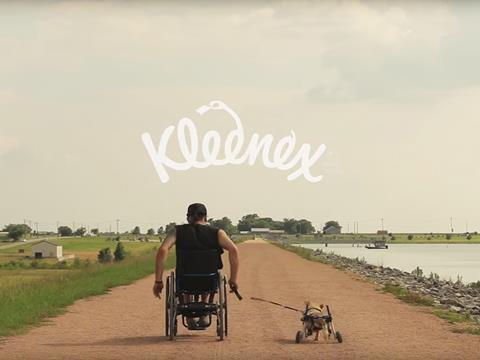
Continuing the trend of highly shareable canine content, Kleenex had viewers reaching for the tissues (and the share button) with this touching and inspiring story about two partially paralysed pals, Chance and Michael. Produced by agency VSA Partners, the ad’s uplifting tone and chirpy score made it an instant hit online where it was shared by over two million weepy people.
Video power
Of the supermarkets, Stafford says Sainsbury’s is “pretty good, it works with YouTube influencers. And Asda did a really good campaign with Mums Eye View. It’s good to see video made purely for social.”
And you only have to look at “the amount of social video being created to see it’s a major trend” says Dan Best, executive director of planning & activation at video ad tech company Unruly. “Fmcg has woken up to the power of video and a lot of it is hitting home. P&G’s Like a Girl campaign was a social video that was remixed for the SuperBowl ad break. You might think it’s the opposite way around, that TV generates content that ends up on social, but this time social created a massive hit. And we will see a lot more of that, where brands have one central ideal they remix for different environments.”
It’s the future, but it’s not easy, says Hagen. “I would never knock traditional advertising. The main role of media is to reach a whole lot of people, so it’s perfect if you’re a supermarket aiming to reach a broad cross-section of the population widely and efficiently. I absolutely believe in the power of TV. But you still need to adopt a digital mindset and apply it to all channels.”
“We need to experiment but everyone still has to hit their numbers”
Dan Hagen, Carat
That still means “buying lots of TV” but being “a lot more scientific in slicing up budgets and blending linear TV, catch-up TV, broadcast TV, video on demand, YouTube, Facebook… we are analysing the optimum way of building reach for each client. Is it 5% new channels? If you’re going for a younger audience, is it 40%?”
Another challenge of a digital mindset is being blinded by data. Hagen says it helps advertisers adopt a personalised approach, but risks “viewing people as data trails. Data is incredibly important but only because it helps us understand and talk with more empathy to people.”
And that raises another important question: just like adopting a joined up approach to the various advertising channels available today, why isn’t effective use of personalised promotions more prevalent in 2016?
“We can get a little caught up in the theory of what is possible versus the reality of how hard it can be to stitch data together in the right way,” says Hagen. “Everyone who has data knows it’s a future revenue stream but there is a real tension in the desire to experiment with new stuff and to monetise it right now. We need to experiment but everyone still has to hit their numbers.”
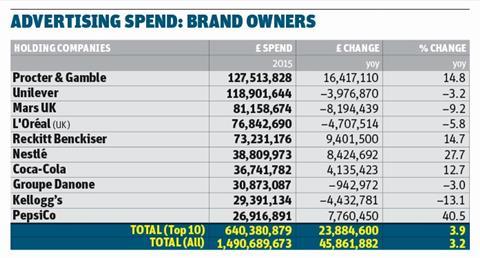
Dazzling
He believes if traditional advertising “wasn’t working” we would be seeing a “faster acceleration” into a more personal data-driven digital future. “But every econometric study I see says telly works pretty well. Also I don’t think there is enough evidence to show that the extra effort and investment involved [in generating highly personalised targeted advertising] consistently drives better performance. So we will get there, but it will be slow.”
There are other hurdles in the way. Digital advertising might offer dazzling ways to drive purchase, but the equally dizzying rise of ad-blocking means it’s a total waste of time if no-one sees them.
“Consumers are getting turned off by what they are seeing so they are pushing advertising away,” says Radcliff. “The root cause is not engaging them in a way that’s appropriate, because if people are engaged with something they won’t block it.”
“Native has gone from being a nice buzzword into something genuinely scalable”
James Stafford, StyleHaul
It’s a “challenge for the industry” says Stafford. “How can we monetise digital content in a way that feels authentic and doesn’t put off the audience? It’s the trend that has led to native advertising. Instead of surrounding content with annoying banner ads or pop ups, let’s integrate the brand into the content to make it simultaneously interesting for consumers and offer value for the brand, so they are willing to pay for it.”
Native advertising is “effectively just advertorial, or content that comes with the voice of the publication,” says Hagen. “I hate the term native. But we love reinventing stuff and giving it a new name. It’s the nature of our industry.”
Still, the industry has “a long way to go in terms of creative excellence in native advertising” says Stafford. “Although I don’t think it’s a bad thing per se. Historically, people never actually wanted to read those clunky newspaper advertorials. But Buzzfeed has amazing talent producing their native advertising. They are the same journalists doing the other content. I read Buzzfeed and I don’t get annoyed when I see a sponsored article.”
It’s not about “reaching consumers but reaching them with content they will actually engage with” says Best. “Native has gone from being a nice buzzword into something genuinely scalable. And that was always a big challenge.”
Top native advertising campaigns
James Stafford, senior VP Europe at StyleHaul, picks his top three native ad campaigns from the last 12 months…
- Mars Temptations - Snacky Mouse
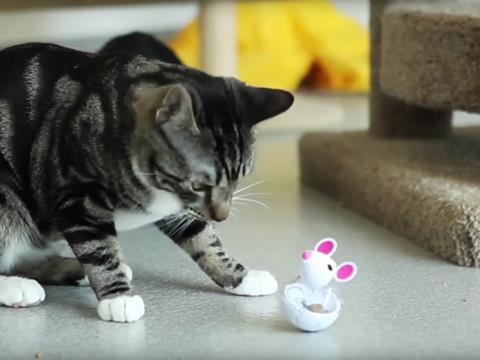
The most difficult part about producing effective native advertising is to make it memorable, and attributable to the brand that created it. To promote the Snacky Mouse by Mars Temptations, a toy that cats have to hit for it to release a treat, Mars released a quirky online movie featuring fighting cats set to the Rocky soundtrack as well as a game on native-loving Buzzfeed.
- Cadbury Creme Egg - Snapchat Lenses
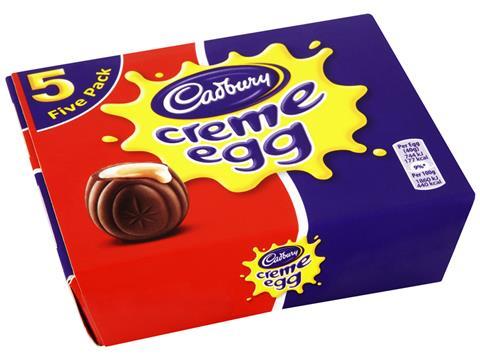
Cadbury is the first confectionery brand in the UK to use the custom filter, an experimental format within Snapchat, and it’s a really neat way of adding value. Out before Easter for maximum impact, it’s a fun experience but the choice of platform could not be more perfect: sharing small moments of joy with friends is intrinsically true for both the brand and the platform.
- MAOAM Challenge
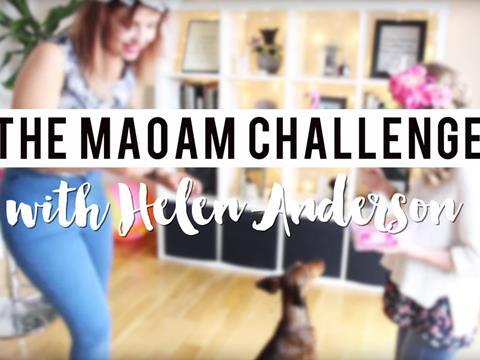
There is no point starting a native campaign with a script and storyboard with how you want the brand to be used - the key is collaboration and sometimes a brand must release some creative control in exchange for a deeper connection with an online community. This campaign succeeded by creating a series of engaging videos on YouTube that reached a wide audience.
Smart media
Lidl has used native cleverly. The discounter was an early fmcg Buzzfeed enthusiast, with sponsored listicles like ‘12 Ways to be a Frugal Foodie’ following the classic BuzzFeed format. Lidl also used Twitter to splash positive tweets from customers all over fixtures, fittings and in-store sineage to spread the hashtag #Lidlsurprises.
Lidl’s advertising and marketing director Claire Farrant says the discounter “doesn’t distinguish” between traditional and new media. “Digital has unique strengths in targeting offers to key groups of customers, but despite exaggerated reports of viewing and readership declines, broadcast audio visual and print continue to deliver high coverage at pace to drive awareness around our offers. We are still developing as a brand and have a lot to share with our new and existing customers, so a balanced media mix that gets us broad reach is vital.”
Both Aldi and Lidl have “very smart media agencies planning their campaigns and delivering a mix of the traditional and the targeting that digital can offer,” says Field. And they have been going at it for a while.
In 2012, Aldi went big, spending an extra 47% (£33m) on ads. In 2013 they kept going, spending £53m (up 43%). In 2014 they slowed, spending £62m, although that was still almost double what they spent two years previously. Last year Aldi spent £62m on traditional ads, an increase of 1%.
As to Lidl, in 2012, it wasn’t at the races. But in 2013, perhaps after watching the level of sales and market share that Aldi was enjoying, and the correlation that could be traced to its hugely successful ad campaigns, Lidl became a convert, employing agency TBWA (which dreamed up ‘Every Little Helps’ for Tesco) and boosting its budget by 47% to spend £23m in 2013. In 2014 it increased ad spend by a further 83%, by far the biggest increase among all the supermarkets. In 2015 it pushed even harder, bumping up its budget by another 89%, making it the biggest spending retailer in the UK, knocking Asda off its perch and eclipsing big spending Aldi in the process.
Lidl also spent more on advertising than McDonald’s and DFS. In total it spent over £78m on advertising in 2015, accounting for 4.37% of all the money spent by retailers in 2015. At the same time, its market share has hit a record 4.2%, according to Kantar Worldpanel, which also says Lidl is the UK’s fastest growing supermarket by sales, which are currently up 18.9% year-on-year.
As for the big four, spending on traditional ads has dropped by a combined average of 20%. Morrisons cut spend by 35%. Tesco spent £64m in 2015, an 18% reduction on 2014 and a 30% drop on 2013.
Sainsbury’s spent 8% less than in 2014. And Asda, which was the biggest spending retailer in 2014, cut ad spend by 19% to £77m.
Blurred lines
As for what’s coming up in the future for advertising, expect more blurring of existing advertising lines. “Brands will become more like publishers,” says Stafford. “They will start producing more content, so you will go to Sainsbury’s to get recipe content all the time. That’s where a lot of brands are focusing their investment, it’s becoming less about advertising and more about generating engaging content.”
Even the various elements involved in bringing an ad campaign to life are coming together. “We are seeing much more collaboration between media houses,” says Field. “And we are hearing the word partnership a lot more between media owners, agencies and advertisers. Even some that may have been direct competitors in the past are coming together to offer advertisers a compelling campaign. At the same time, briefs are getting more interesting and more dynamic, which puts a much bigger and broader challenge to us in the way we offer solutions to advertisers. And it’s exciting. Because it all means the advertising space is exploding.”








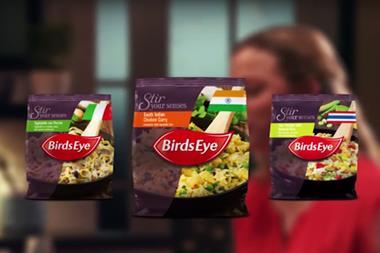
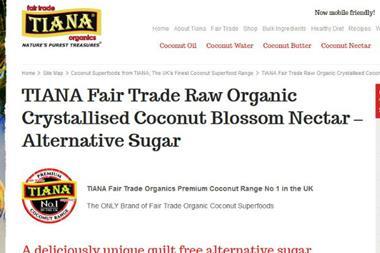

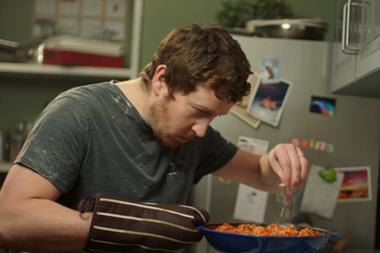

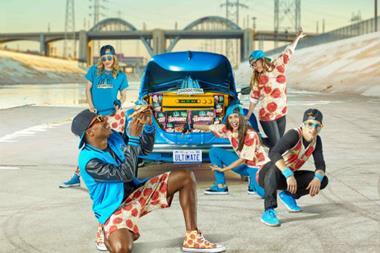






No comments yet